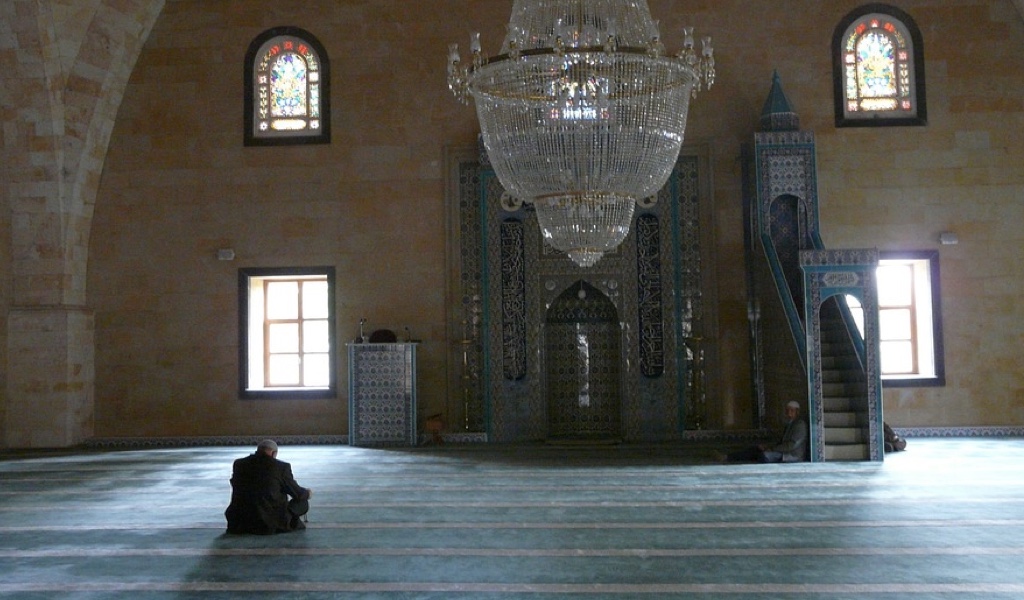** The night prayer – 8 units, 20 units, or perhaps 39? **
It’s not actually the eight vs twenty units of prayer debate that I wish to shed light on here, but a topic altogether different.
For now, consider the following:
Our mother ‘Aisha said:
مَا كَانَ يَزِيدُ فِي رَمَضَانَ وَلاَ فِي غَيْرِهِ عَلَى إِحْدَى عَشْرَةَ رَكْعَةً ، يُصَلِّي أَرْبَعَ رَكَعَاتٍ ، فَلاَ تَسْأَلْ عَنْ حُسْنِهِنَّ وَطُولِهِنَّ ، ثُمَّ يُصَلِّي أَرْبَعًا ، فَلاَ تَسْأَلْ عَنْ حُسْنِهِنَّ وَطُولِهِنَّ ، ثُمَّ يُصَلِّي ثَلاَثًا
“The Prophet PBUH never prayed more than eleven units, whether during Ramadan or otherwise. He would perform four units but do not ask about their beauty and length, then he’d perform another four units, but do not ask about their beauty and length, then he’d pray three (witr)”
(Bukhari and Muslim)
In other reports, it was narrated that the Prophet PBUH would pray thirteen units; eleven units as described above and an additional two light units that he’d introduce his night prayer with. This was the way of the Prophet Mohammad during the night prayer.
Many Mosques have opted for eight units that are concluded with three units as Witr to be in line with the Prophetic way, but are we actually upon it? In other words, is “being upon the prophetic way” just about imitating the number of the prophet’s units at night, or does it also include imitating the quality of those units as well?
We leave home for the night prayer and return an hour or so later. Your wife asks, “Masha’Allah! You’ve finished already?”, and you reply, “Yes, Alhamdulillah, we applied the Sunnah of praying 11 units. Isn’t the Sunnah so beautiful?”. Yes, call it beautiful if you wish, but don’t call it the Sunnah, as the prophetic way of the night prayer is not just a number but a description as well!
“Don’t ask about their length and beauty!”
Hudhaifa once prayed with the Prophet PBUH and said:
“I joined the Prophet PBUH on one evening during his night prayer, and he started reciting Surat Al-Baqarah (the longest chapter of the Qur’an). I thought that he would go in bowing at the end of one hundred verses, but he continued reciting. So, I thought that he would perhaps recite the entire Surah in the whole prayer, but he continued reciting. So, I thought he would perhaps bow on completing it. He then started reciting Surat An-Nisa’ (chapter 4) till he finished it, then started reciting Surat Aali-‘Imraan (chapter 3) till he finished it.
He would recite leisurely, and whenever he recited an Ayah which mentioned Tasbeeh, he would pause and say “SubhanAllah” and whenever he recited an Ayah which speaks of a request, he would pause and ask of Allah, and whenever he recited an Ayah which speaks of seeking refuge in Allah, he would pause and do that.”
(Muslim)
So, how long was that one unit of his? Hours at least!
Similarly, the companion’s night prayer was so long that by the end of the prayer, they would be leaning on sticks.
During the reign of ‘Umar, two companions – Tameem and Ubayy – lead the Muslims for eleven units of night prayer.
However, people struggled to keep up with this, hence it was decided that the amount of recitation would be reduced but would be compensated by increasing the number of units to twenty.
Again, people eventually struggled to keep up with this, hence the number of units was further increased to 39 units.
Naafi’ – whose base was the city of Madina – said:
لم أدرك الناس إلا وهم يصلون تسعا وثلاثين ويوترون منها بثلاث
“My only experience with people was that they were performing 39 units, which included three units as Witr.”
(Fathul Baari)
So this was the way of the people of Madina a few years after the Prophet PBUH.
In fact, when the governor of Madina contacted Imam Malik for the purpose of reducing the number of units for the night prayer – 39 units – Imam Malik prohibited him from doing so and said:
هذا ما أدركت الناس عليه وهذا الأمر القديم الذي لم تزل الناس عليه
“This is what I have found that people are doing, and this is the old way of the people.”
(Al-Mudawwana)
If Imam Malik is saying that this is the “old way”, although he is himself a very early Muslim (born in year 93AH), then it shows that it was a very early tradition.
Undoubtedly, the best form of night prayer is that which the Prophet PBUH performed with respect to how many he performed – eleven – and *how* he performed them. For those who cannot do this, then there is maneuverability in the matter.
However, the point of this piece isn’t to argue a case for a particular number of units for the night prayer. The purpose is to establish just one key message;
Don’t complain of the duration of your local Imam’s prayer.
Remember the example that was set by those before you.
Subscribe for Updates
Original content used with permission from:






